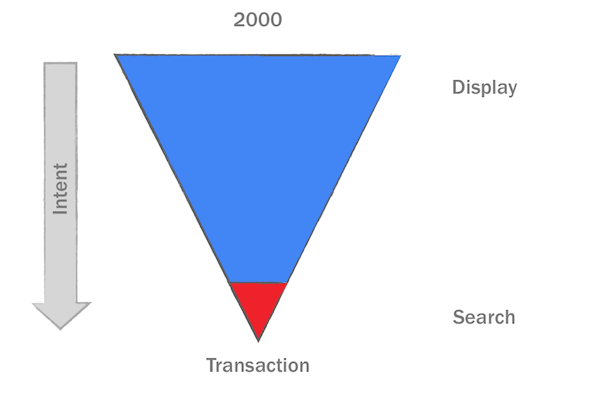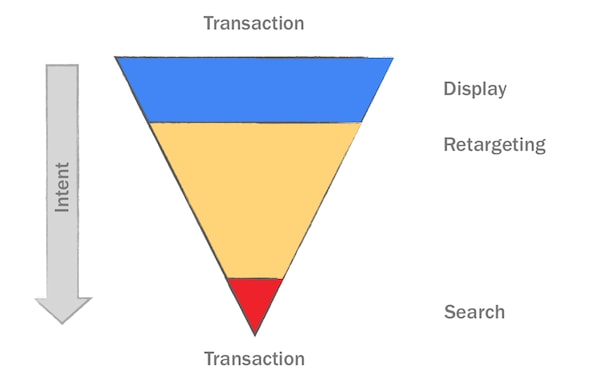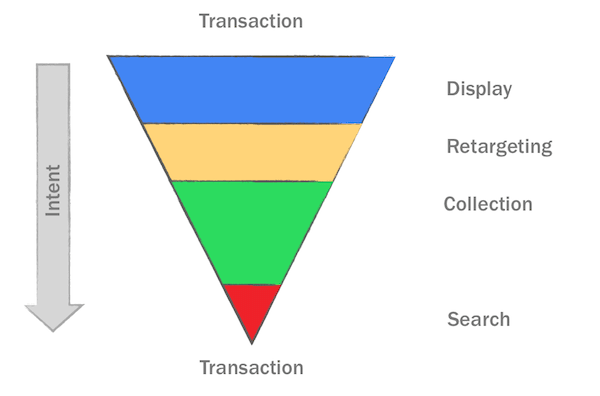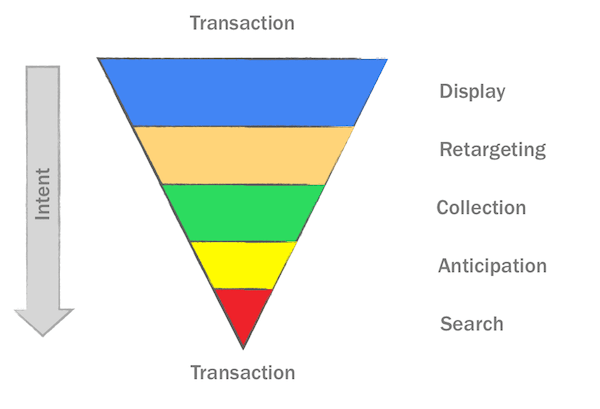Intent to purchase is the engine of the consumer web. Creating and capturing intent motivates almost every dollar invested into ecommerce and advertising. Intent is also the fuel for the Internet’s most successful business model, Google’s AdWords + Search.
As the internet has evolved, so have the ways of creating and capturing intent. From display to search to retargeting to collections, each new technique has leveraged data in a novel form to discover consumers’ wishes. I believe we’re at the beginning of the next wave of mining that intent using anticipatory computing.
In the mid and late 90s, display advertising predominated. Search evolved and was perfected in the early 2000s. Search and search ads ushered in an era of measuring return on advertising spend. A dollar spent on ads could be proven to generate more than a dollar in sales. The user intent funnel looked like this:

Then, Quigo and Blue Lithium and others pioneered behavioral targeting/retargeting which uses information about users to target ads. As users traverse the internet, they leave Hansel and Gretel breadcrumbs that reveal intent when aggregated. These breadcrumbs are most useful when fresh but become stale quickly. Behavioral targeting balanced the targeting of search with the breadth of display ads.

In 2009, Pinterest and Houzz started providing tools for users to collect, organize, present and share things. Some subset of these collections are wishlists and to-buy lists, which are very direct expressions of intent, second only to search in value. Collection is today broadly adopted by tens of millions of users. This explicit intent-to-purchase data has never before been captured at scale. While the monetization of this intent is still arguably nascent, the means to generate revenue from it is straightforward at this point, affiliate sales or on-site commerce, and the market opportunity before these companies is quite simply massive.

Today, we’re on the precipice of an entirely new way of doing so which I’m calling anticipatory computing. Anticipatory computing, which is best demonstrated by Google Now, pre-empts users with answers before users can ask questions. How long will it take to commute home? When will my Amazon Prime package arrive? What will the weather be today? Google Now tells me those things each day. Google Now is possible because of the gigantic amounts of user data created on the web.

Those same technologies that drive answers to daily questions will be applied to uncovering intent and proactively prompting users to drive commerce. Today, there are some early and crude concepts of this: notify me by when an item drops below a certain price or allow me to pre-purchase Grand Theft Auto 5 before release or send me a text message coupon when I walk past a BestBuy.
I’m not sure precisely what anticipatory commerce will look like and how to solve the signal to noise ratio. But given the amount of data users have created using collections and breadcrumbs left on the web, I’m hopeful we will see some tremendous innovation and some very large companies changing the way intent is harnessed on the web.